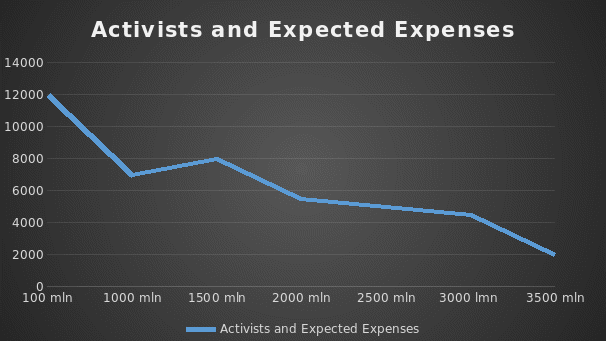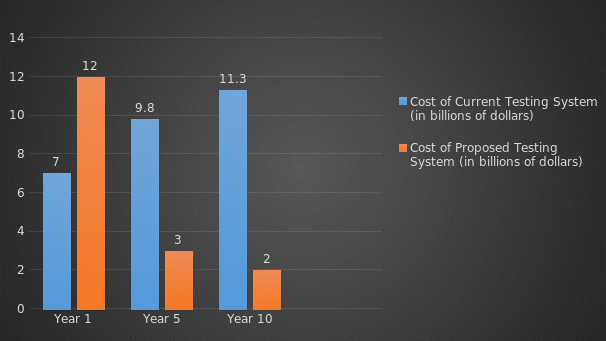The problem of gender discrimination has been affecting the relationships between the members of the global society to their detriment. Although it would be unreasonable to believe that a single effort will absolve humankind of gender inequality immediately, a set of strategies for managing the problem may pave the way for future improvements. At present, it is critical to introduce a set of tools for enhancing education about gender equality to the target demographic in order to address family relationships. Thus, the issue of family concern is expected to be addressed adequately.
The proposed solution is believed to have better outcomes on the management of family-related problems than the existing alternatives due to the focus on encouraging independence in developing an opinion about the problem, as well as the incorporation of modern media in the process. As a result, the participants will feel that they are not being forced to assume a particular position on the problem of gender equality but, instead, are given an opportunity to come to their own conclusions (Lundy & Janes, 2014).
Furthermore, the suggested approach implies reevaluating the current system of social values and standards, which may prevent the introduction of equality-based principles and philosophy (Stanhope & Lancaster, 2015). Consequently, people will gradually accept the concept of equality as a part of their value system.
The current plan for managing the problem involves addressing the concern on a cultural level and proceed to handle it on the economic and political ones. In the course of building awareness among the community members and shaping their value system, social media will be used actively. Thus, the discussion of the concern will have to become the platform for the further improvement of the present-day status quo.
As a result, the family concern levels within the specified society will be reduced (Lundy & Janes, 2014). The proposed solution for handling inequality as one of the critical factors that contribute to the rise in family concern rates should be seen as unique since it connects the problem of gender to the relationships within a family and the communication process between genders on a social scale.
In order to implement the specified solution, one will require the support of local authorities. Particularly, the head of the community will have to be involved in helping reconsider the existing value system and set the social events that will encourage a shift in values. On a political level, local authorities will be involved to shape the current legal standards and invite both male and female community members to participate actively. (Stanhope & Lancaster, 2015) In the course of the study, the following deliverables are expected: locating sociocultural and socioeconomic factors for gender inequality, altering the existing value system, promoting gender awareness, shaping people’s attitudes toward the gender issue.
The solution described above is likely to lead to vastly positive outcomes due to the focus on empowerment, awareness, and promotion of social activism. By educating the target demographic about the problem of gender inequality and suggesting alternative behaviors, one is likely to build the levels of sympathy toward the plight of women and gender minorities in the specified society high. The resulting rise in social and political activism will encourage a gradual shift in the value system and the attitudes within the society. As a result, family relationships will improve due to the change in priorities and the development of a better understanding of the problem.
Moreover, the proposed solution is likely to require a comparatively small number of financial resources due to the emphasis on the importance of social networks. Since most of the communication between the citizens and the local authorities, as well as among the community residents, will occur online, one will contribute to a drop in expenses (Denham, Eggenberger, Krumwiede, & Young, 2015). As the chart provided below shows, an exponential rise in the number of activists will lead to a reduction in the financial resources spent on the awareness campaign.

As the chart shows, the rise in the number of people involved in the social, economic, and political activity associated with gender equality is expected to be in inverse proportion to the number of costs taken on the program. The specified effect is explained by the fact that the target demographic is likely to stir the community discussion and, thus, attract new participants quickly, making the project self-sustaining. Furthermore, as Figure 2 shows, the costs are likely to decrease with the gradual involvement of new participants in the process of handling the gender issue.

Managing family needs is a critical step in encouraging the well-being of the community. By enhancing the principles of gender equality within the specified setting and guiding people toward a more balanced approach toward building gender-related communication patterns, one will be able to introduce a more effective system of handling family difficulties and resolving the relevant conflicts. Particularly, the dialogue between family members will be enhanced, and the needs of all participants involved in it will be taken into consideration. For this purpose, modern social media will have to be utilized to build awareness levels (Denham et al., 2015).
References
Denham, S., Eggenberger, S., Krumwiede, N., & Young, P. (2015). Family-focused nursing care. Philadelphia, PA: F. A. Davis.
Lundy, K. S., & Janes, S. (2014). Community health nursing (3rd ed.). New York, NY: Jones & Bartlett Publishers.
Stanhope, M., & Lancaster, J. (2015). Public health nursing: Population-centered health care in the community (9th ed.). New York, NY: Elsevier Health Sciences.